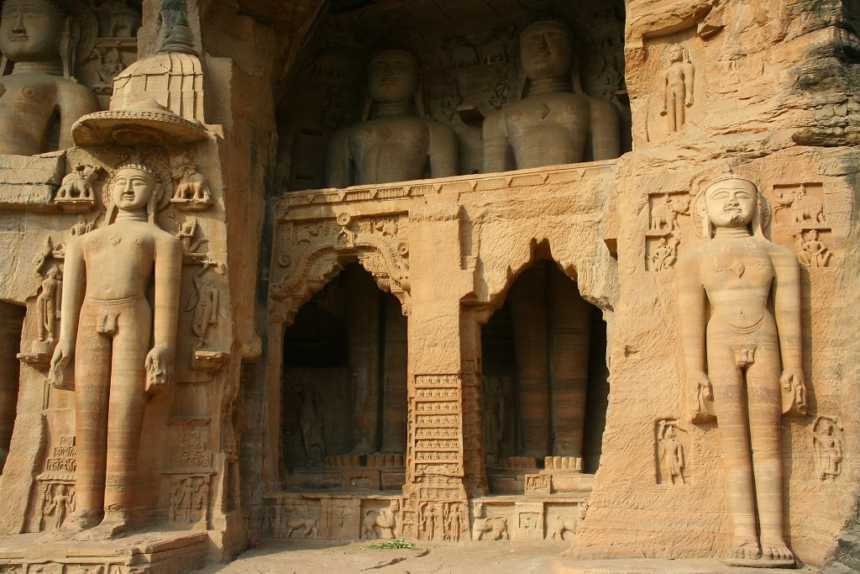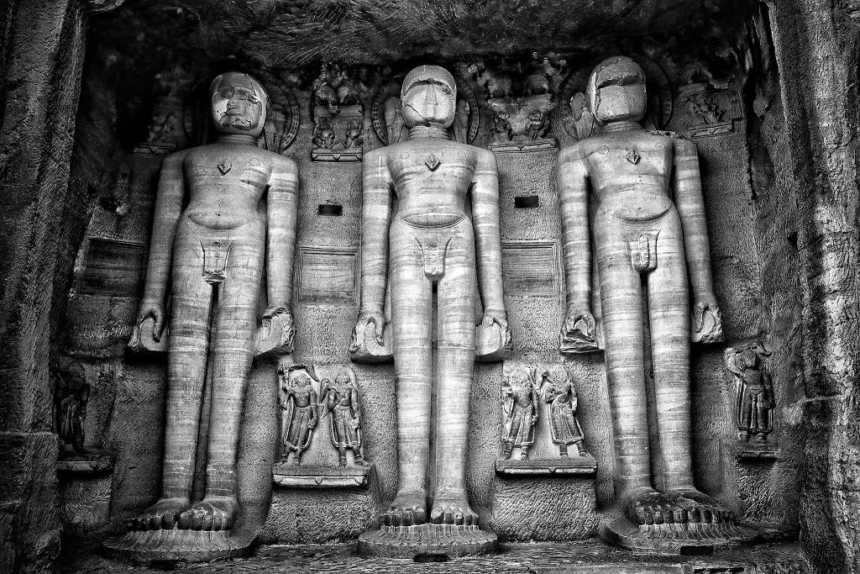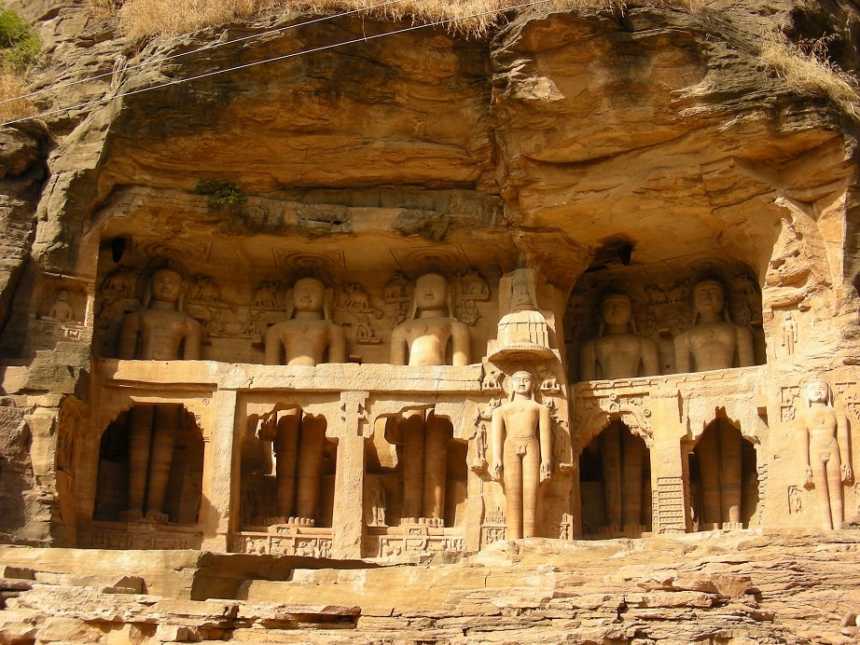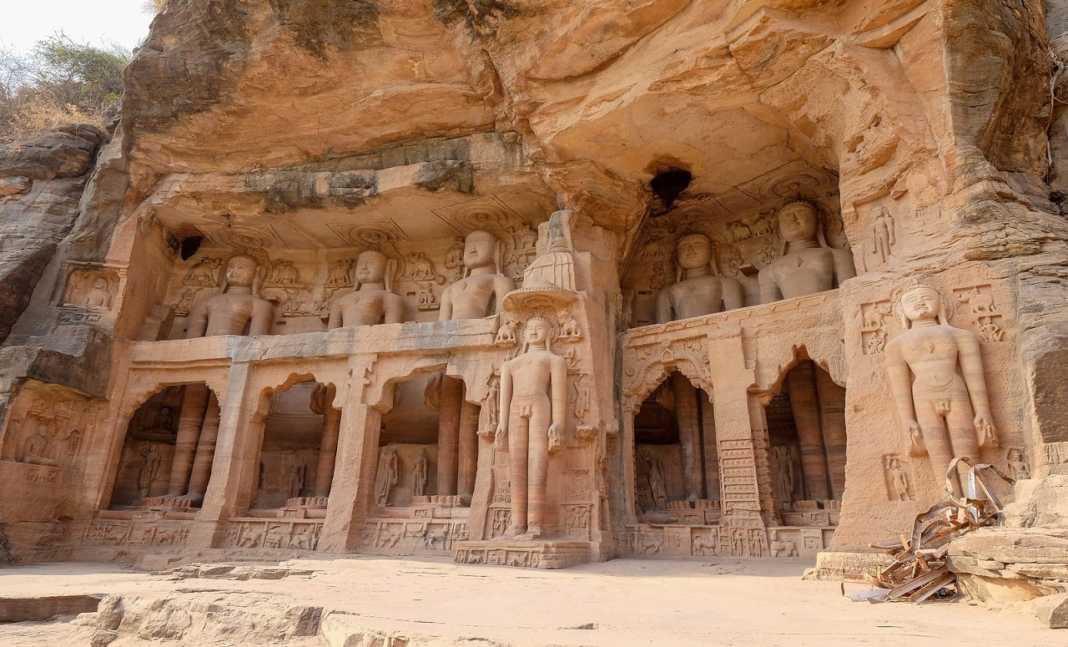Gwalior is an important city in Madhya Pradesh, India. It is rich in architectural marvels. The fort situated 100 m above from the town of Gwalior is the main attraction here. Within the arena of the fort, Jain temples create the unique monuments group including Siddhachal Caves and Gopachal rock cut Jain monuments being the two areas, with hundreds of Jain Tirhankars (spiritual teachers of the right path in the Jain religion) Statues which were destroyed by the Islamic Invaders.
Most of the Jain statues on the hill had been chiseled during the 15th century, though a few are thought to date back as far as the 7th century AD.
All the statues that were carved in the early 15th century were built during the reign of most tolerant Tomar King Dungar Singh and by his son and successor, Kirti Singh. The Tomar Queen herself was either a Jain or was a great follower of this non violent religion.

Gopachal Parvat rock cut Jain monuments
Situated on a long straight cliff on the eastern face of the hill, Gopachal Parvat is one of the largest and most important rock-cut Jain monuments in India. There are around 1500 Idols of Jain Tirthankaras (Teaching Gods) including 18 colossal statues, some up to 10m tall, but many more from 2m – 5m tall. The largest statue of Parsvanath seated on a Lotus is approximately seventeen meters in height.
The Gopachal rock cut monuments are dated earlier than the Siddhachal Caves located about 2 kilometres (1.2 mi) north of these monuments.

Siddhachal Jain Temple Caves
Siddhachal Jain Temple Caves are the major tourist attraction of the Gwalior fort. The beauty of Siddhachal Caves lies in their structural formation of monumental statues and the depiction of Jain legends through several reliefs, which are created flawlessly on the rocks.
Siddhachal caves have almost thirty one Jain temples in the fort. The monuments include many caves, small reliefs on the walls, as well as 22 colossal statues. The largest of these are for Rishabhanatha (Adinatha) with a height of 57 feet (17 m).

Even though the destroyed monuments and statues seem incomplete in terms of their formation, the beauty of these structures is still unfathomable.
The inscriptions found near the monuments credit them to the Tomar kings, and they range from the 1440 to 1453 CE.
Both monuments were defaced and desecrated around 1527 when the Mughal Emperor Babur ordered their destruction. Babur explained in a memoir,
They have hewn the solid rock of the Adwa [Urwa], and sculptured out of it idols of larger and smaller size. On the south part of it is a large idol, which may be about 20 gaz (40 feet in height). These figures are perfectly naked, without even a rag to cover the parts of generation. Adwa is far from being a mean place, on the contrary it is extremely pleasant. The greatest fault consists in the idol figures all about it: I directed these idols to be destroyed.
Centuries later, the Jain community restored many of the statues by adding back stucco heads on the top of the damaged idols.






